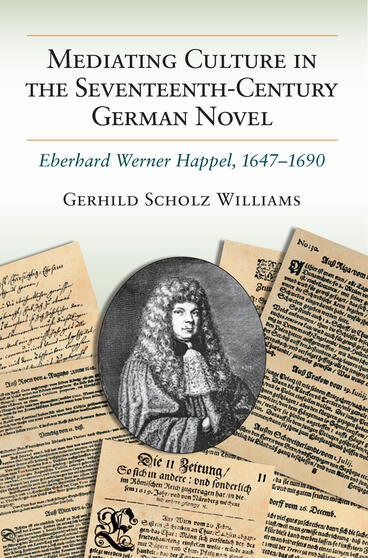Mediating Culture in the Seventeenth-Century German Novel
Eberhard Werner Happel, 1647-1690
A fascinating and exciting reevaluation of the 17th-century novels of Eberhard Happel
Description
Eberhard Happel, German Baroque author of an extensive body of work of fiction and nonfiction, has for many years been categorized as a “courtly-gallant” novelist. In Mediating Culture in the Seventeenth-Century German Novel, author Gerhild Scholz Williams argues that categorizing him thus is to seriously misread him and to miss out on a fascinating perspective on this dynamic period in German history.
Happel primarily lived and worked in the vigorous port city of Hamburg, which was a “media center” in terms of the access it offered to a wide library of books in public and private collections. Hamburg’s port status meant it buzzed with news and information, and Happel drew on this flow of data in his novels. His books deal with many topics of current interest—national identity formation, gender and sexualities, Western European encounters with neighbors to the East, confrontations with non-European and non-Western powers and cultures—and they feature multiple media, including news reports, news collections, and travel writings. As a result, Happel’s use of contemporary source material in his novels feeds our current interest in the impact of the production of knowledge on seventeenth-century narrative. Mediating Culture in the Seventeenth-Century German Novel explores the narrative wealth and multiversity of Happel’s work, examines Happel’s novels as illustrative of seventeenth-century novel writing in Germany, and investigates the synergistic relationship in Happel’s writings between the booming print media industry and the evolution of the German novel.
Gerhild Scholz Williams is Vice Provost, Barbara Schaps Thomas and David M. Thomas Professor in the Humanities, and Associate Vice Chancellor at Washington University in St. Louis. She is a Sixteenth Century Society & Conference Medalist.
Reviews
"This reviewer lauds Scholz Williams's expertise about the literary Happel, whose significance has been long bottomshelved. Marked by scholarly footnoting, authoritative quotations, a multilingual bibliography, comprehensive index, attractive cover design, and well-executed illustrations, this realignment of timeworn interpretations merits a 'superb!' ... Highly recommended."
- L.J. Rippley, St. Olaf College
--Choice
"[Mediating Culture in the Seventeenth-Century German Noval] is an important milestone in the research on an author who was denounced by reviewers as a “shallow writing maniac” and was marginally received in literary history. The conclusion of Scholz Williams, that Happel has been misunderstood, can open new directions in the analysis of Happel’s work."
- ORSOLYA LEN ART, Andras s y Universitat Budapest
--ORSOLYA LEN ART, Renaissance Quarterly
"[Mediating Culture in the Seventeenth-Century German Novel] should be recognized as a first step towards exploring the author Happel and an avenue through which more insights and knowledge of the Baroque culture are possible."
- Carolin Struwe
--Carlin Struwe, Monatshefte
"Scholz Williams’s study provides a convincing presentation of an almost forgotten author and his oeuvre, and it impresses not only with precise and deliberate analyses of the novels but also – and, indeed, especially – by its classification of these in the media landscape of the late seventeenth century."
- Victoria Gutsche
--Seminar
¨...appeals to readers interested in print culture, the development of the newspaper industry in Europe, and the interplay of fact and fiction in the popular novel of the day.¨
- SHARP News
--SHARP News

